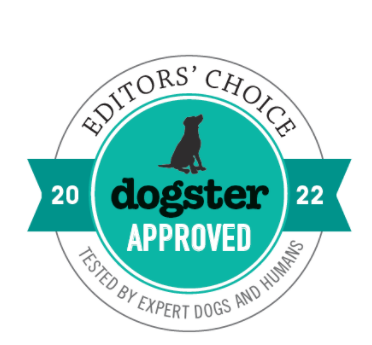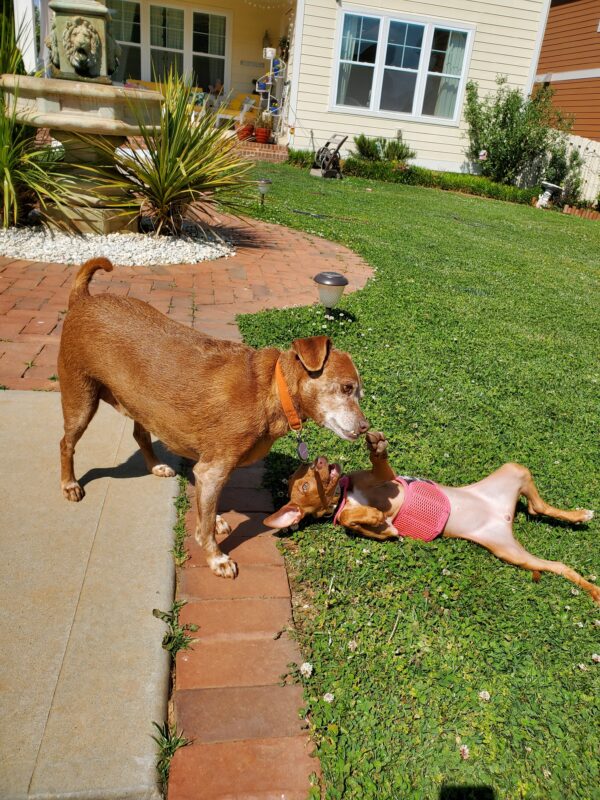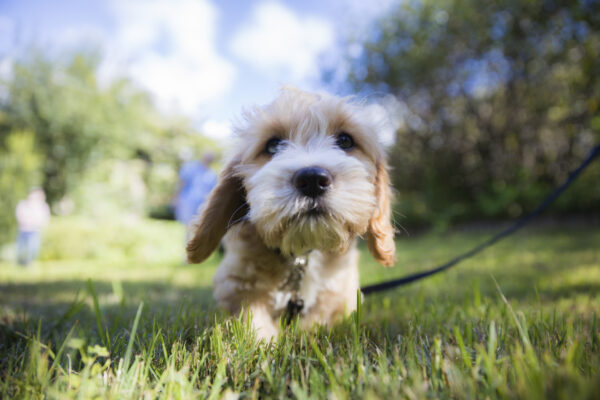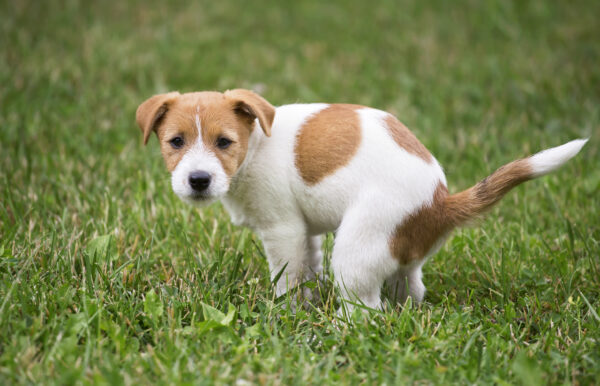Everyone loves a puppy. But your current dog may feel differently at first, no matter how adorable the puppy is. It can take weeks or longer for your dog to accept the puppy. Don’t force or rush interactions. Always set them up to succeed.
To start, avoid the puppy running into your home with your resident dog there. After all, would you want a stranger suddenly rushing up to you in your house? Probably not. And neither does your dog.
Assuming that your current dog is canine friendly and you’ve chosen a compatible puppy, managing the environment and properly introducing your new puppy to your dog will help you achieve a happy household.
Steps for the best way to introduce dogs
Remain calm and upbeat during all introductions to help avoid stress — yours and the dogs. Next:
- Trade scents. If possible, get a blanket or similar item with the puppy’s scent from the dog breeder or rescue prior to getting him. Place that item where your current dog’s bed is located. This familiarity helps him accept the young newcomer.
- Introduce the dogs on neutral territory. To prevent your adult dog from becoming territorial, don’t introduce your new puppy in your house or yard. This can be at a friend’s house or other location that your dog doesn’t view as his own turf and where other unvaccinated dogs haven’t been.
- Each dog should have a separate handler. The two handlers should walk parallel to each other about 10 feet apart. Put both canines on harnesses so that a tight collar or leash doesn’t convey that something’s wrong. Walk in this parallel position for just a few minutes without them meeting.
- Read your adult dog’s body language. If at any time during the walk or during later introductions, your dog shows that he’s stressed, end the interaction. Even better, end it before your dog becomes stressed.
Stress signals include:
- Drooling
- Raised hackles
- Tucking his tail, under his body
- Lip licking
- Body tension, including furrowed brow
- Staring at the puppy with a hard stare
- Ears pulled back
- Whale eye
- Moist pads that leave a paw print that’s not heat related
- Shedding dandruff
- Have a brief greeting. If your adult dog seems welcoming to your puppy, have his briefly greet for a few seconds using a “say hello” cue. Then have each handler cheerily say “let’s go” and walk away. Do this introduction three times prior to meeting at your house.
- Exercise each dog physically and mentally before each interaction. Take each for a walk or have each fetch a toy Do a few obedience cues. You want to take the edge off but not have them get too tired before meeting. Make sure the puppy and the dog have separate areas to retreat to when interacting in case either needs a break.
When you’re ready to introduce your dogs at home, have a handler take your adult dog outside in your yard.
How to introduce a new puppy to your dog in your home
The following steps are ways to introduce them successfully in your home after they’ve met on neutral territory. Only proceed to the subsequent step after they have met successfully during the prior one.
- Have them meet through a barrier. Put the puppy in an exercise pen or behind a gate. Then have them briefly meet using two handlers, one focusing on the puppy and one focusing on the adult dog. Reward each pup for positive interactions. Call your adult dog away after a few seconds. Do this exercise for a few minutes total and end on a positive note. You may do this set up for a few days until the dogs feel comfortable with each other.
- Take them on walks together. Do parallel walks together with a handler for each dog. Have them about 10 feet apart, eventually walking closer over time while each is calm. You can do this inside, off territory and in your yard.
- After your adult dog is accustomed and welcoming to the puppy, have them meet inside with each dog’s leash dragging while wearing harnesses. Be ready to grab the leash and walk them away from each other before interactions become too intense. Take frequent breaks between interactions. End each training session on a positive note while both dogs enjoy the interaction.
- Meet off-leash. Over time — may take weeks — if they seem to be getting along well, have them meet off-leash, inside. Be ready to interrupt before play becomes rough. Look for play bows and soft, inviting body language. Be ready with two handlers who can each call a dog over to interrupt the play.
- Reward all positive interactions. Praise and reward each with a yummy treat when they calmly interact.
Scheduling feeding and training for new puppy and adult dog
Each canine requires some alone and separate time with you. So have a schedule. Try to keep your adult dog’s prior schedule as much as possible. Maintain the great bond with your adult dog by not upsetting his world unnecessarily.
- Have a feeding, exercise, play, training and sleep schedule where each pup has some time alone with you. This shows your adult dog that you care for and about him and gives you bonding time with the puppy to teach him some manners.
- Train each dog separately — then together. Training some basic cues such as attention and name recognition, Come, Sit, Down, Stay, Leave it, Drop it and loose-leash walking will help communicate your rules to the puppy, give him confidence and help further your bond. After the puppy understands some basic manners, assuming your adult dog knows the same cues, have them perform them together sometimes. These cues will help you be able to call each pup away from each other before interactions become too intense. And train your puppy to use a crate.
- Socialize your puppy. Get your puppy used to all he will be exposed to in the world. Of course, do it at his own pace.
Rules for new puppy and adult dog interactions
After the initial interactions are going smoothly and each knows some ground rules, start accelerating their education together, but keep the following principles in mind:
- Don’t allow either dog to bully the other. Observe all interactions and never leave the young puppy alone with the adult dog. An adult dog who properly corrects a puppy is fine. But don’t allow the puppy to harass the adult. And don’t let the older canine get too rough with the youngster.
- Introduce toys and other goodies over time. As long as your older dog doesn’t guard resources, start to give them new toys. Place a few toys on the ground and have separate handlers play with each pup at opposite ends of the room. Then switch handlers and toys.
- Get professional help if necessary. If at any time your older dog is aggressive to the puppy or doesn’t seem to be progressing in his acceptance of the newcomer, get professional help from a positive reinforcement trainer or behaviorist.
Getting a new puppy is a great experience. You picture your adult dog and pup being best friends and playing together, tugging toys and curling up together. To ensure that all goes well, make sure that you properly introduce the dogs. Then the idyllic picture you envision of them happily romping through a field may come true!
Prior to your new puppy’s arrival, follow these steps.
- Decide where he will reside in your home
- Have a crate, an exercise pen and gates ready so that your adult dog and puppy can each have a safe area to retreat to when they need some alone time.
- Prepare the central area that both pups will be in together by removing toys, food bowls, food and chews to help avoid any possible resource guarding.
- Have new toys ready to eventually introduce to the dogs.
- Get yummy, high-value treats so that you can reward all great interactions. These can be purchased ones or small pieces of boiled, deboned chicken or cheese.






